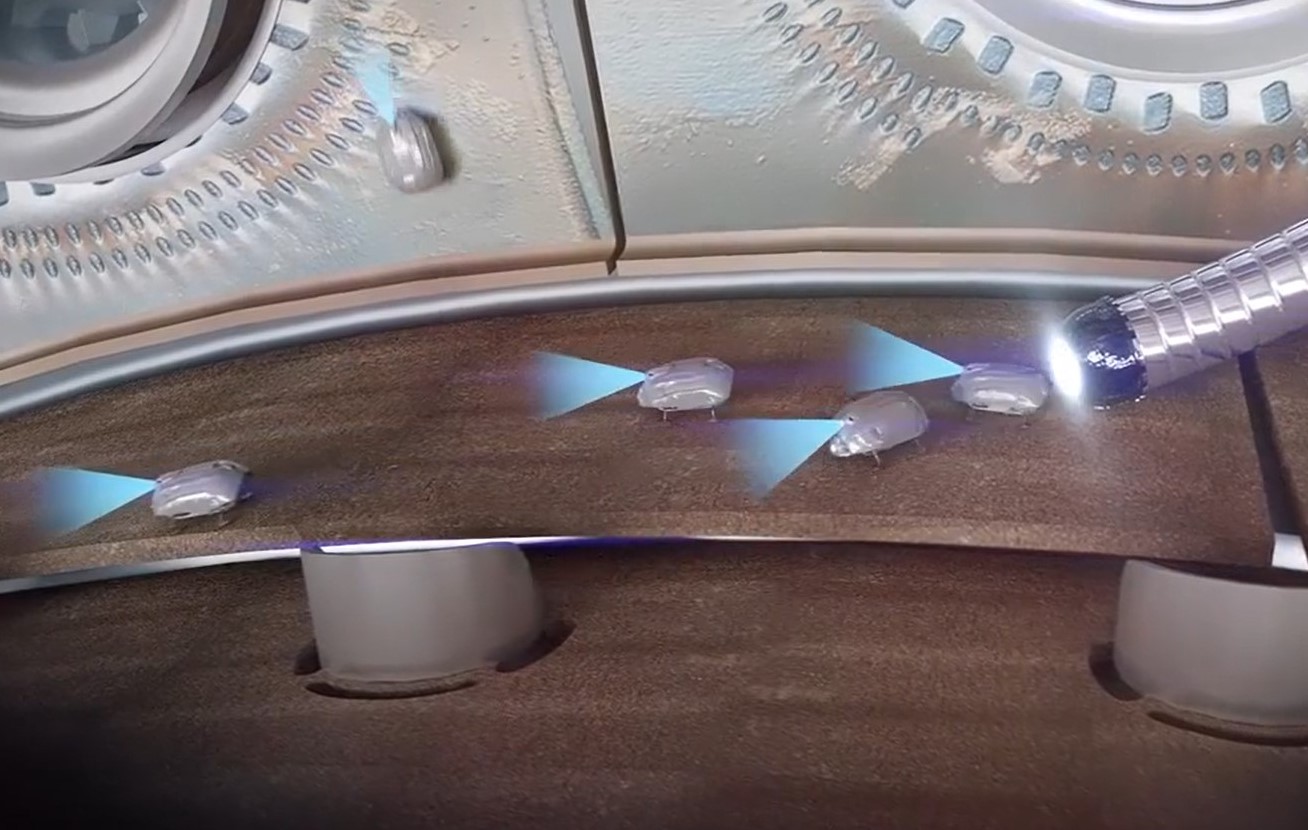It isn’t clear if they will say “Danger Will Robinson!” after locating a problem but swarms of tiny inspection robots could one day make engine inspections faster and easier.
The idea is one of several unveiled by Rolls-Royce at the Farnborough International Airshow to improve the ability of airlines to keep tabs on engines and make repairs more efficient.
READ: The future of travel to emerge at an airshow.
Rolls has teamed with research centers such as Nottingham and Harvard universities to demonstrate a range of potential future technologies to enhance engine service.
They include the tiny insect-like SWARM robots. These would be about 10mm in diameter and would be deposited in the center of an engine via a “snake robot”.
The robots would carry small cameras capable of providing a live video feedback to the operator as they crawl through the engine to allow fast, on-wing inspections.

INSPECT robots would be a network of periscopes permanently embedded within the engine so it could inspect itself and report any maintenance requirements.
These “pencil-sized” robots would be thermally protected from an engine’s extreme heat and their visual data would be used alongside millions of data points a generated by modern engines as part of the Engine Health Monitoring systems.
FLARE robots would be a pair of “snake’ robots that wind their way through an engine like an endoscope and collaborate to carry out patch repairs to damaged thermal barrier coatings.
Remote boreblending robots would be remotely controlled by specialist engineers to perform complicated maintenance tasks such as repairing damaged compressor blades.
They would be directed remotely from Rolls-Royce’s Aircraft Availability Centre, removing the need for specialist teams to travel to the aircraft and reducing the time to return it to service.
Rolls is exploring advanced technologies as part of its IntelligentEngine vision but admits some have a way to go.
“While some of these technologies, such as the SWARM robots, are still a long way from becoming an everyday reality, others, such as the remote boreblending robot, are already being tested and will begin to be introduced over the next few years,’’ said Rolls-Royce on-wing technology specialist James Kell.
“We have a great network of partners who support our work in this field and it is clear that this is an area with the potential to revolutionize how we think about engine maintenance. “
























